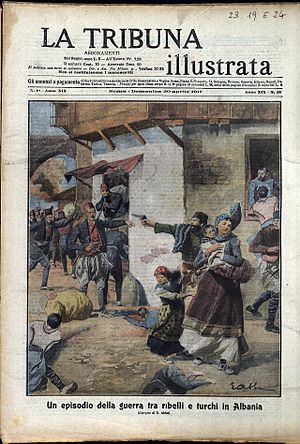The Albanian National Awakening, commonly known as the Albanian Renaissance or Albanian Revival, is a period throughout the 19th and 20th century of a cultural, political, and social movement in the Albanian history where the Albanian people gathered strength to establish an independent cultural and political life, as well as the country of Albania.

Isa Boletini was an Albanian revolutionary commander and politician and rilindas from Kosovo.

Kachaks is a term used for the Albanian rebels active in the late 19th and early 20th century in northern Albania, Montenegro, Kosovo and Macedonia, and later as a term for the militias of Albanian revolutionary organizations against the Kingdom of Serbia (1910–18) Kingdom of Yugoslavia (1918–24), called the "Kaçak movement".

Dedë Gjon Luli Dedvukaj also referred to as Ded Gjo Luli and Deda was an Albanian guerrilla leader most notable for commanding the 1911 revolt against Ottoman troops. He was posthumously awarded the "Hero of Albania" title. Dedvukaj was the clan chieftain of the Hoti tribe.
Albanians in Montenegro are an ethnic group in Montenegro of Albanian descent, which constitute 4.91% of Montenegro's total population. They are the largest non-Slavic ethnic group in Montenegro.

Bjelopavlići is a historical tribe (pleme) of Albanian origin and a valley in the region of the Brda, in Montenegro, around the city of Danilovgrad.
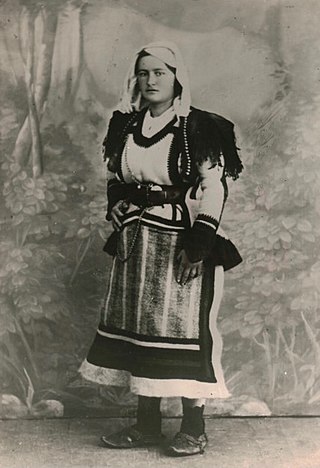
Tringë Smajl Martini Ivezaj , known simply as Tringe Smajli, and as Yanitza outside Albania, was an Albanian guerrilla fighter who fought against the Ottoman Empire in the Malësia region. She was the daughter of Smajl Martini, a Catholic clan leader of the Grudë tribe of Malësia.
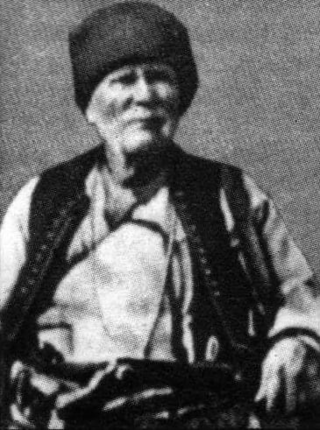
Idriz Seferi was an Albanian leader and guerrilla fighter (rebel). During his 56-year military career, he fought in 35 battles. A member of the League of Prizren and League of Peja, he was the right-hand man of Isa Boletini, with whom he organized the 1910 Uprising against the Ottoman Empire in the Kosovo Vilayet. After the suppression of the uprising, Seferi continued warfare, in the 1912 Uprising. In the First Balkan War, Boletini and Seferi rose up against Serbia, with whom they had previously been allies to during the 1910 and 1912 Uprisings, and continued to attack Serbian posts in the subsequent occupation and initial phase of World War I (1913–1915). In the second phase of the war (1916–1918), he led troops against Bulgarian forces.

Prenk Bib Doda, also known as Prênk Pasha, was an Albanian member of the Young Turks, prince of Mirdita, and politician in the Principality of Albania.

The Peasant Revolt, also known as the Muslim uprising, was an uprising of peasants from central Albania, mostly Muslims against the regime of Wilhelm, Prince of Albania during 1914. It was one of the reasons for the prince's withdrawal from the country which marked the fall of the Principality of Albania. The uprising was led by Muslim leaders Haxhi Qamili, Arif Hiqmeti, Musa Qazimi and Mustafa Ndroqi. Along with a demand of total amnesty, the rebels required the return of Albania to the suzerainty of the Sultan of the Ottoman Empire.

The Black Society for Salvation was a secret Albanian nationalist society established in 1909. Its main task was to organize uprisings in southern Albania and Macedonia struggling for the unification of the four Ottoman vilayets with the substantial Albanian population into one autonomous political unit with its own government and parliament. The members of the society considered the armed rebellions as legitimate means for achieving their aims.

The Sanjak of Scutari or Sanjak of Shkodra was one of the sanjaks of the Ottoman Empire. It was established after the Ottoman Empire acquired Shkodra after the siege of Shkodra in 1478–9. It was part of the Eyalet of Rumelia until 1867, when it became a part, together with the Sanjak of Skopje, of the newly established Scutari Vilayet. In 1912 and the beginning of 1913 it was occupied by members of the Balkan League during the First Balkan War. In 1914 the territory of Sanjak of Scutari became a part of the Principality of Albania, established on the basis of the peace contract signed during the London Conference in 1913.
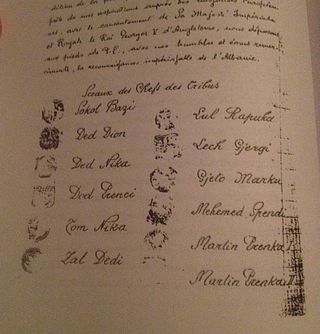
The Greçë Memorandum or the Red Book was a memorandum with twelve requests for the establishment of an autonomous Albanian province within the Ottoman Empire. The Memorandum was jointly written by Ismail Kemal and Luigj Gurakuqi.
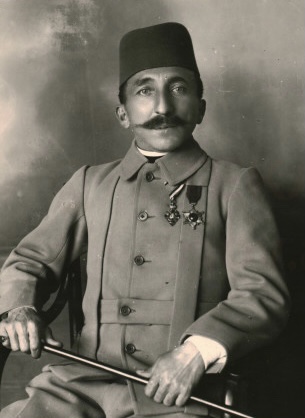
Hysni Curri (?–1925) was a Kosovar Albanian military figure and a prominent leader of the Kachak movement and the Committee for the National Defence of Kosovo.

Shevket Turgut Pasha was an Ottoman army general with the rank of mirliva, who also held the governmental title of pasha (lord). He went to the Prussian military school.
The Second Congress of Manastir was an Albanian congress held on 2–3 April 1910 in Manastir, back then Ottoman Empire, today's Bitola in the Republic of North Macedonia. It dealt with the challenges that the Albanian language and schools faced at the time within the context of the empire, and the platform to overcome them.
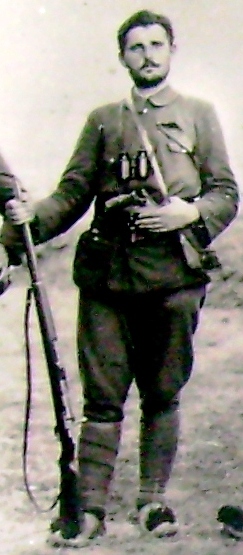
Menduh Zavalani (1889–1914) was an Albanian revolutionary and political leader active during the last years of the Albanian National Awakening. He formed his own revolutionary band and was one of the leaders that liberated Përmet and the environs from the Ottoman Empire. Menduh was an appointed delegate from his hometown Korça to the Albanian National Congress that proclaimed the Independence of Albania. In the intellectual level Menduh was noted for the translation of Friedrich Schiller's drama Wilhelm Tell into Albanian. He was assassinated at a very young age near Pogradec by a local collaborationist band.
At the conclusion of the Albanian-Ottoman Wars in the 15th century, the Albanian people revolted against the Ottoman Empire. These actions during this time continued an extended period of conquest and border expansion into Southeastern Europe. The Ottomans were left in control of all the main Albanian cities, besides Durrës and Ulcinj, which were still controlled by the Venice. Albania would be ruled by the Ottomans for over 400 years, but this rule would be frequently disrupted by revolts and uprisings with varying degrees of success.
The Taksim meeting alternatively known as the Taksim Plot and less commonly as the Taksim Assembly was a secret meeting held in January 1912 by Albanian nationalist deputies of the Ottoman parliament and other prominent Albanian political figures. The event gets its name from Taksim Square because of the location of the house where it was held. The meeting was organized on the initiative of Hasan Prishtina and Ismail Qemali, Albanian politicians, who invited most of the MPs of Albanian origin and aimed at launching an armed general uprising in Albanian territories against the central government headed by the Committee of Union and Progress (CUP). The meeting followed two other Albanian uprisings of 1910 in the Vilayet of Kosovo and 1911 in the mountains of upper Shkodra. The Taksim meeting resulted in an uprising the same year, with armed uprisings in Shkodër, Lezhë, Mirditë, Krujë and other Albanian provinces, which exceeded the organizers' expectations. The biggest uprising was in Kosovo, where the rebels were more organized and managed to take over important cities like Prizren, Peja, Gjakova, Mitrovica and others.
Sulejman Aga Batusha or Sulejman Aga Botusha was a prominent Albanian resistance fighter and revolutionary leader from the Highlands of Gjakova and the wider Gjakova region who participated in the Albanian National Awakening. Born sometime in the 19th century, Sulejman Aga would repeatedly lead Albanian forces against the Ottomans throughout the 19th and 20th centuries, ultimately contributing to the Albanian Declaration of Independence from the Ottoman Empire. He was also a chief of the Gashi tribe and was their head in the Gjakova region.
